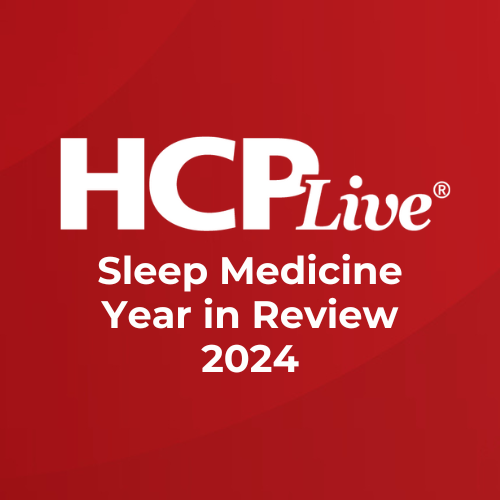Video
Defining and Diagnosing Insomnia Disorder
Karl Doghramji, MD: Insomnia disorder is a complaint of poor sleep quality or quantity. So patients complain that they do not fall asleep quickly enough, that they wake up a lot of times during the course of the night, that they have a diminished sleep amount, or that they wake up feeling unrefreshed during the course of the day. Insomnia disorder is also the frequency assigned to it by the DSM-5 [Diagnostic and Statistical Manual of Mental Disorders, fifth edition], which is the most commonly nosological classification for insomnia. It has to occur at least 3 nights per week and has to occur over the course of 3 months or longer to be defined as a disorder. Plus, it has to have consequences. In other words, individuals who don’t sleep well need to have some degree of impairment during the course of the day or have to be concerned a great deal about having that problem.
Now some of the consequences of insomnia include things like motor and coordination, memory decrement during the course of the day, falling asleep during activities of daily functioning—and more dangerously while driving—and so on and so forth. These are some of the impairments that patients have to complain about to qualify as insomnia.
Finally, what’s interesting about the new nosological classification of insomnia is that we no longer look at insomnia as being a primary or secondary phenomenon. We now look at it as being a problem, or disorder, that coexists with other disorders or is comorbid with other disorders. We’re used to saying that insomnia occurred because of this problem or because of that problem. Now we say that insomnia is comorbid with depression or gastroesophageal reflux or sleep apnea. And the reason for that is that data have shown us that we don’t have a good way of establishing causality between insomnia and these other conditions. For example, a patient has major depression. They could have depression and insomnia, but it’s very possible that the relationship between insomnia and depression is a circular one in which depression causes insomnia, but insomnia then makes depression worse. Really, you have the existence of 2 autonomous conditions in the context of 1 patient. We now refer to the insomnia secondary, with the primary phenomenon being insomnia comorbid with these other disorders.
We used to make a great deal of acute insomnia and chronic insomnia and the differences between those 2. Acute insomnia is variously defined as being insomnia that lasts around a month or shorter, and long-term or chronic insomnia lasts between a month and 6 months or even longer.
Unfortunately, the distinction has not allowed us to really tease insomnia apart into 2 very diverse categories, because those categories don’t seem to have differences in terms of causes. Acute insomnia could be caused by major depression and so can long-term insomnia. But I do think it’s important to ask about these durations of insomnia in the older individual to find out how long they’ve been suffering with this problem. Because the longer one suffers, possibly the greater entrenched insomnia may become and the more problematic it may become in terms of daytime consequences.
The primary and secondary categorization, of course, is something that we no longer adhere to. We now call insomnia either comorbid or noncomorbid because of the understanding or suspicion that insomnia, when it exists with another disorder, may or may not be caused by that disorder and may be an independent phenomenon.
Because insomnia in the older adults is often related to multiple underlying conditions, it’s important in the context of the work-up to be able to systematically ask about those conditions, at least the hallmark symptoms of those conditions. For example, heartburn in the case of the gastroesophageal reflux or significant weight loss and anhedonia in the case of major depression or breathing pauses and snoring in the case of sleep apnea.
A systematic evaluation is critical before we delve into symptomatic treatment. In addition, going backward, it’s even critical simply to ask an older person about sleep. We find that most practitioners ignore sleep in their new patient work-ups and even in the follow-up sessions they have with patients. Asking, “How is your sleep?” can be so important in identifying sleeplessness as a problem and treating it, because of the fact that sleeplessness is so often associated with impairments that could be possibly averted if insomnia is properly diagnosed and treated.
Ask about sleep. Systematically ask about the disorders that may be causing insomnia. And thirdly, look at the nature of the sleep problem itself. For example, is it a problem with falling asleep, is it a problem staying asleep, or both? The reason we ask for that is No. 1, many of the pharmacologic agents that we use either help sleep latency or sleep maintenance or both. Asking about the nature of the sleep complaints over the course of a night can help us identify the pharmacologic agent more accurately.
No. 2, the nature of the sleep complaints over the course of the night also helps us understand the diagnosis related to insomnia. Insomnia characterized by early-morning awakening and falling asleep early in the night could be related, for example, to an advanced sleep-phase syndrome, a circadian rhythm disturbance, which could be treated with bright-light therapy and circadian adjustment. On the other hand, insomnia characterized by waking up a lot during the course of the night may be related to major depression or nocturia. Those are some of the things we need to do to understand insomnia, the nature of insomnia, and some of the underlying comorbidities in the older person.
Transcript edited for clarity.





